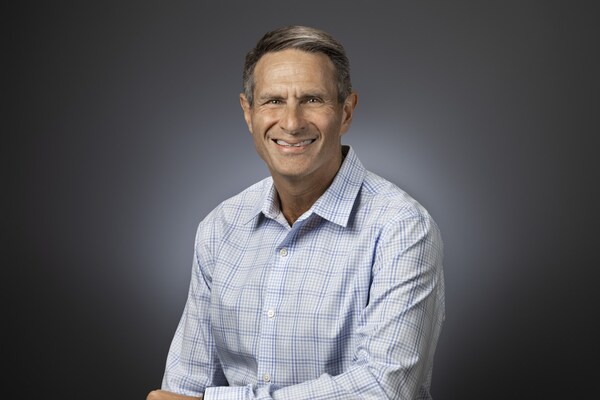Thought Leadership
How to make the most of the virtual influencer wave
CONTACT
hello@stagwellglobal.com
SIGN UP FOR OUR INSIGHTS BLASTS
This piece is part of Stagwell’s Marketing Frontiers series on the Creator Economy, Influencer Marketing, and Social Commerce. To view other content in the series, visit our Creator Economy page here.
As brands explore the Metaverse, expert investment and experimentation with digitally rendered brand ambassadors to follow. When should brands leverage virtual influencers over IRL creators? How can they navigate anxieties around virtual perfectionism, unrealistic beauty standards, and representation as they play in this space? What opportunities do virtual influencers afford that real-life creators may not? We asked influencer and social experts from around Stagwell to share their POVs:
Web3: Enter the Age of Virtual Avatars
Donetta Allen, HUNTER
First, let’s answer the question of “what is a virtual influencer?” A virtual influencer is a fictional, computer-generated personality that acts, speaks, and posts on social media or appears in the Metaverse – like a human, but in a much more controlled way. The tech-savvy, faceless creators and brands behind virtual influencers decide how their avatar will act, dress, who they date, and what drama will – or won’t – appear on the timeline. The ability to work with a fictional character whose every move is controlled by a creator has an appeal for brands in a world full of opinions and photo re-shoots, even in a world where “authentic connection” is often a top reason for marketers to work with influencers.

That said, brands should begin exploring virtual influencers ASAP. Digital avatars are becoming increasingly common as brand partners, with companies like Adidas, Samsung, and Fortnite engaging virtual influencers for recent campaigns. It is expected that the prominence of marketers tapping into the virtual influencer marketplace will increase as the metaverse continues to advance.
Virtual influencers’ carefully curated images allow for greater messaging control, alignment with brand values, and less risk of controversy throughout the duration of the partnership. Like real creators, virtual influencers are diverse – from their ethnicity, gender, size, to interests – and brands should prioritize diversity as they do with real creators. While costly to develop, virtual influencers may be less expensive than traditional influencers to engage for brand campaigns. They are also reported to have 3x the engagement rate of traditional influencers, adding yet another compelling reason to consider virtual influencers for your next campaign. As more brands seek to work with these stylized, fictional characters and new opportunities emerge, we’ll start to see the diversification and expansion of the virtual influencer landscape so that it more closely reflects the human experience.
Virtual Influencers & Transmedia Brand Campaigns
Natalie Goenaga, KWT Global
Digitally-rendered influencers have made a splash on our screens since 2016 when the world was introduced to Lil Miquela. Seemingly appearing out of thin air, Lil Miquela was a thoughtfully curated personification of Instagram and Instagram culture created by a startup in Los Angeles made to “question the social norms of online platforms”- while making the mysterious company millions of dollars in sponsorships. Over the last 6 years, Lil Miquela has amassed a following of over 3 million, participated in campaigns with the likes of Bella Hadid for Calvin Klein, walked with Prada for Milan Fashion Week, modeled for Chanel, Coach, Balenciaga, and named by TIME as one of “The 25 Most Influential people on the Internet.” Did I mention she has a budding career as a pop star with over 198,000 monthly listeners on Spotify?
 As the Metaverse, CGI, and AI continue to creep onto center stage, the rise of these digital influencers is sure to follow. But in a cancel-culture world that holds a magnifying glass to transparency and authenticity from creators and brands how will these perfectly engineered creators navigate the delicate landscape and how can brands appease the masses? In the example of Lil Miquela – it is worth noting that the CGI Brazilian-American 19-year-old has serious activism chops. A vocal ally, she actively supports Black Lives Matter, the Innocence Project, LGBTQ+ Life Center, the Downtown Women’s Center, and Justice for Youth. But is that enough? The digital influencer world is certainly conforming to these changes with perfectly imperfect characters that challenge the beauty industry and their inspiring backstories and diversity to conform to the new mold. And while all creators carefully tread this sensitive landscape, with virtual influencers there is a sense of more control and brand safety and stability as their presence is meticulously and carefully crafted.
As the Metaverse, CGI, and AI continue to creep onto center stage, the rise of these digital influencers is sure to follow. But in a cancel-culture world that holds a magnifying glass to transparency and authenticity from creators and brands how will these perfectly engineered creators navigate the delicate landscape and how can brands appease the masses? In the example of Lil Miquela – it is worth noting that the CGI Brazilian-American 19-year-old has serious activism chops. A vocal ally, she actively supports Black Lives Matter, the Innocence Project, LGBTQ+ Life Center, the Downtown Women’s Center, and Justice for Youth. But is that enough? The digital influencer world is certainly conforming to these changes with perfectly imperfect characters that challenge the beauty industry and their inspiring backstories and diversity to conform to the new mold. And while all creators carefully tread this sensitive landscape, with virtual influencers there is a sense of more control and brand safety and stability as their presence is meticulously and carefully crafted.
As the most active consumers of influencer content, Millennials and Gen-Z want influencers and brands to do one thing well – and that’s to keep it real. With virtual influencers, that’s admittedly a bit harder to do. Balancing the line of when to activate real influencers and those in the digital space is a new tension brands will have to navigate but provides plenty of creative and unique opportunities. Activating virtual influencers for campaigns in an overly saturated influencer market creates thumb-stopping content for those “big splash” moments – like the recent Adidas collaboration with virtual influencer RUBY9100M who designed a custom sneaker for the brand and released her debut single alongside the launch.
Another powerful tool that can be leveraged by digital influencers? Transmedia. This newer storytelling technique can tell a single story or story experience across multiple platforms and formats using today’s current technology. Much like a traditional 360 campaign, transmedia campaigns allow digital influencers to tell your brand’s story and transition it across multiple virtual environments with ease. A virtual influencer will remain recognizable anywhere, so brands can leverage them in a TikTok video, Instagram post, or in a video game. And when it comes to costs, brands are able to activate virtual influencers for larger-than-life ideas that may not be possible with IRL creators without breaking the bank. Want to “fly” your digital creator around the world? Want to launch a campaign with them in space? Virtually anything can become possible.
Virtual or Real, the Strategy is the Same
Kelli Goss Johnson, Allison+Partners
Brands should approach virtual influencers as they would an IRL creator: for authentic brand partnerships, campaigns, awareness and messaging, while ensuring that the brand’s consumers and social audience fully understands that the virtual influencer is exactly that (and not a real human or animal). Virtual influencers can be utilized over IRL creators when the brand wants more control over the content and its many aspects, in addition to creative freedom of the content developed.

Real or not, these influencers should also be ‘on-brand’ and have the same value properties as the brand, while offering loyalty, exclusivity and brand affinity to the partnership or campaign. They are also brand safe (you won’t catch them in an unflattering paparazzi moment or posting something uncomplimentary on social media) and can be activated when, where and how a brand wants them to. And while virtual influencers have been criticized for their perfectionism, so have IRL creators, leaving the door open for virtual influencers to socially share some of their more imperfect moments and make them more relatable or ‘real.’ There is also opportunity to cross both an IRL influencer into the Metaverse with a virtual influencer, supporting the authenticity of the virtual influencer while introducing the IRL influencer into a fully digital ecosystem.
Related
Articles
In the News, Marketing Frontiers, Press Releases, Stagwell Marketing Cloud
Apr 02, 2025
The European Commission Expands its Partnership with UNICEPTA by PRophet to Include Media Analysis

Artificial Intelligence, In the News, Marketing Frontiers, Press Releases
Apr 02, 2025
Stagwell (STGW) Appoints John Kahan as Inaugural Chief AI Officer

In the News, Investments & Financials, Press Releases
Apr 02, 2025
Stagwell (STGW) Will Host 2025 Virtual Investor Day and Announce $5 Billion Revenue Target by End of FY29





